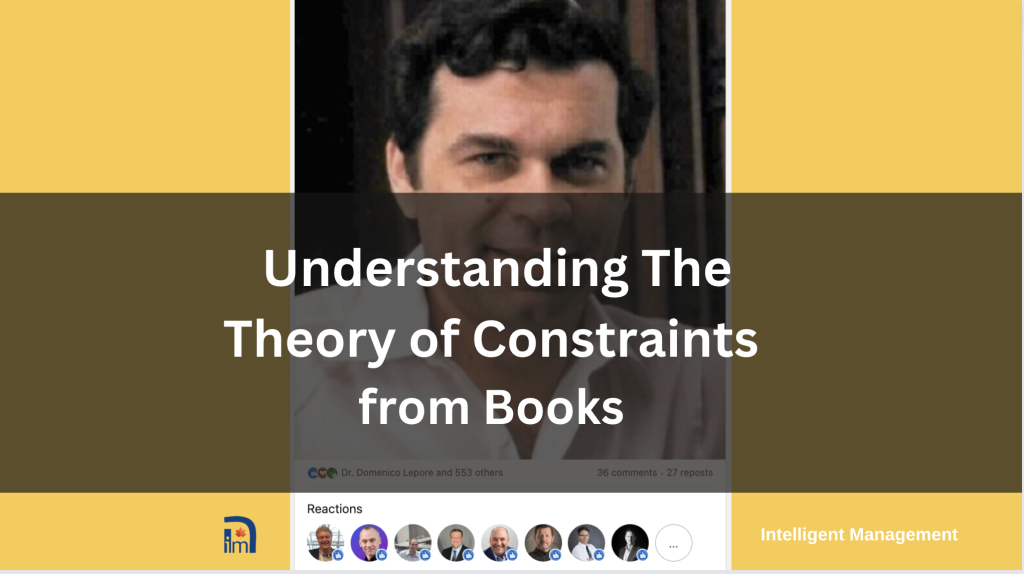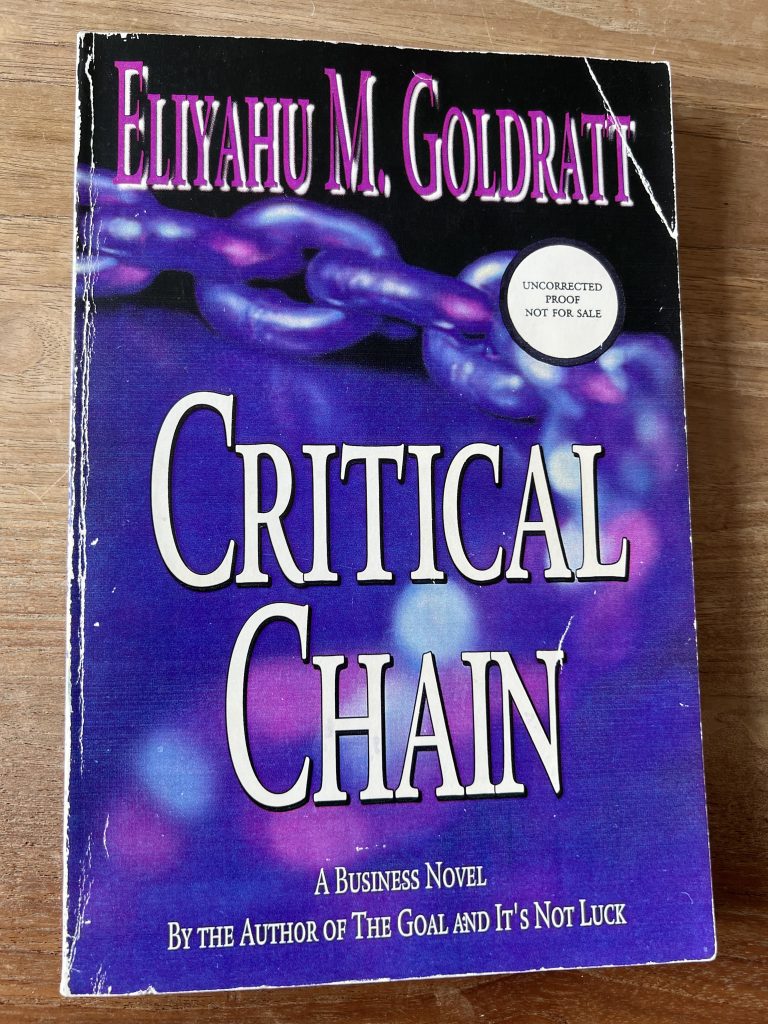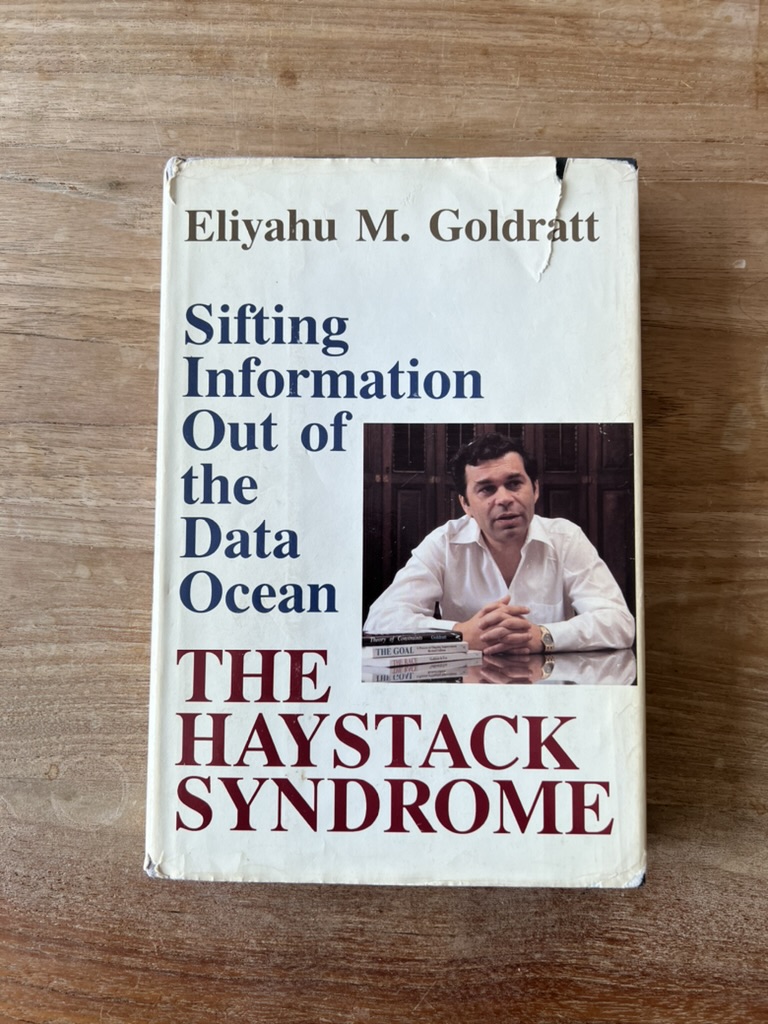
Thousands of views on LinkedIn
On 31st March this year, as it was the birthday of Dr. Goldratt who developed the Theory of Constraints, we posted a photo of him and a short message:
Today is Dr. Eliyahu Goldratt’s birthday. We spent the morning surfacing assumptions that we can challenge in order to create a breakthrough, the way Dr. Goldratt taught us. Challenging those assumptions will positively influence all our actions and interactions. We are deeply grateful for the science and method provided by the Theory of Constraints. Sharing that knowledge and method with others is a lifetime journey.
That post continues to receive views beyond the 24,705 impressions and 553 reactions captured below. Every Sunday we have posted a picture of one of Goldratt’s books with a mini review. These posts have had a wonderful reception (over 40,000 views to date) and we are continuing the series. Today’s blog post gathers together our reviews of Goldratt’s book that are at the core of our Decalogue methodology.

It’s Not Luck

Do you struggle to fully understand the Theory of Constraints? Dr. Goldratt’s Thinking Processes are the hard core of the theory and essential to its comprehension. Our team at Intelligent Management has been helping organizations absorb and apply these processes since 1996, introducing systemic thinking for complexity across a range of sectors. From manufacturing to innovation, marketing and sales, multi-project management, and exponential growth, our work centers around the Thinking Processes. Designed to achieve breakthrough results, they deliver when properly understood. The Thinking Processes can drive innovation and growth in any organization.
Critical Chain

Dr. Goldratt’s ‘Critical Chain’ introduced a revolution into the world of Project Management. This brilliant systemic solution overcomes the inherent flaws of mainstream approaches. Critical Chain builds projects that are reliably on time and within budget. It has a special meaning for us at Intelligent Management as we received one of the first uncorrected proofs of the book before official publication in 1997. It’s something we always treasure.
Learn more about Critical Chain in our new blog post ‘The Critical Chain Method for Project Management: The Best Kept Secret‘
Necessary But Not Sufficient

At the turn of the millennium, Dr. Goldratt wrote ‘Necessary but not Sufficient’ to explain the simple truth about ERPs and the lethal fallacies of existing policies regarding them. He wrote it with a talented IBM executive, Carol Ptak, and the alleged support of the Corporation. As always, Dr. Goldratt’s recipe for success was largely ignored; IBM did not follow suit to their promise of backing up with products the ideas of the book. Instead, the SAPs of the world took over, fostering a multi-billion dollar industry of mindless and often detrimental technology-driven consultancy.
As Goldratt previously wrote in ‘The Haystack Syndrome’, data and useful information for decision making purposes are two very different concepts; the former is transformed into the latter through a thought process. It is the thought process that should inform the how and why of an ERP.
‘Necessary but not sufficient’ completes the tetralogy of business novels Dr. Goldratt wrote. The book does not have the same might of its predecessors and (sadly) had little impact on the industry it was addressing. It still contains though, after 25 years, all the necessary sparks to ignite decision makers who believe in Human Intelligence.
The Haystack Syndrome

The Haystack Syndrome’ (1990) turns up the volume on Dr. Goldratt’s campaign to make “common sense” prevail over “conventional wisdom”.
In this unwavering, unabashed, uncompromising “Joyce-esque”, stream of consciousness, Dr. Goldratt designs a Yellow Brick Road through all the foundational elements that propel the competitiveness of organizations: from the architecture of an IT system (one that truly generates the information we need) to the finite scheduling and management of product flow (and, YES, he does quote the foundational importance of Statistical Understanding of processes….).
The Haystack Syndrome is one of the precursors of complexity studies as applied to the economics of operations. The “P&Q” exercise unveils the inherent fallacy of Cost Accounting and its grip on competitiveness. The idea of “Constraint” as a leverage point and not just as a “weak link” takes the conversation on synchronous manufacturing and productivity to a completely different level.
Larry Gadd, the man behind the success of Dr. Goldratt’s books, was less keen on ‘The Haystack Syndrome’ as he rightly foresaw a meagre circulation. This book imposes on the reader a level of intellectual commitment that very few are willing to make. It replaces the joyous and short lived inspiration provided by ‘The Goal’ with the blunt awareness of the gigantic effort needed to accomplish the Transformation underpinned by a more evolved form of management. Good Night and Good Luck.
What Is This Thing Called The Theory of Constraints?

The word “Theory” is sacred to a scientist. It is only apt that it appears in the title of the Manifesto for the management revolution that Dr. Goldratt was about to spearhead. Unlike its use in common parlance, “Theory” is not the opposite of “Practice”; it is, instead, the prerequisite for it.
‘What Is This Thing Called Theory of Constraints’ is the most intellectually powerful of all Dr. Goldratt’s writings. It contains the elements of scientific method that leadership must embrace; it unleashes the might of his management worldview and it ushers in the process of thought that was later formalized in the Thinking Processes.
By quoting Socrates, Newton, Einstein and Deming, Dr. Goldratt paints the backdrop against which he was developing his approach to the management transformation he would advocate for the rest of his life.
‘What Is This Thing Called Theory of Constraints’ deals with the scientific and philosophical issues concerning management. Its overall goal is to elevate the conversations regarding management above the technicalities.
Just like ‘The Haystack Syndrome’, this book had a very limited readership and, in fairness, it is way above the intellectual pay grade of many. But it is worth a shot; in a world awash with “stolen cheese” and “successful habits” it is a reminder that knowledge, not know-how, should be the priority for successful leadership.
To find out more about ten guided steps to a systemic leap ahead for your company, contact Angela Montgomery at intelligentmanagement@sechel.ws
SCHEDULE AN INTRODUCTORY CALL WITH US

Intelligent Management works with decision makers with the authority and responsibility to make meaningful change. We have helped dozens of organizations to adopt a systemic approach to manage complexity and radically improve performance and growth for 25 years through our Decalogue management methodology. The Network of Projects organization design we developed is supported by our Ess3ntial software for multi-project finite scheduling based on the Critical Chain algorithm.
See our latest books: The Human Constraint from Taylor & Francis; From Silos to Networks: A New Kind of Science for Management from Springer; Moving the Chains: An Operational Solution for Embracing Complexity in the Digital Age by our Founder Dr. Domenico Lepore, and ‘Quality, Involvement, Flow: The Systemic Organization’ from CRC Press, New York by Dr. Domenico Lepore, Dr. Angela Montgomery and Dr. Giovanni Siepe.





Leave a Reply